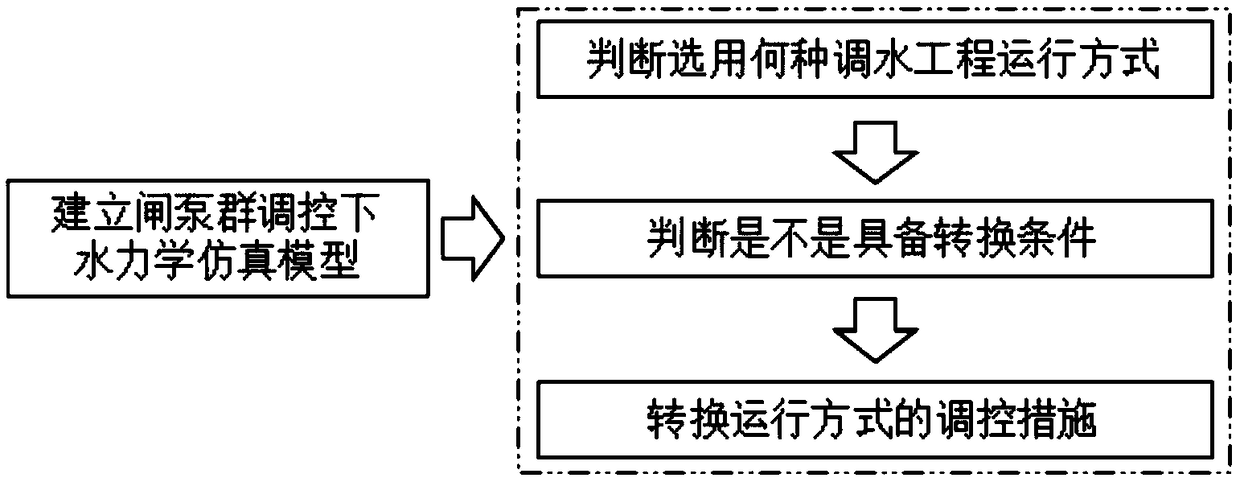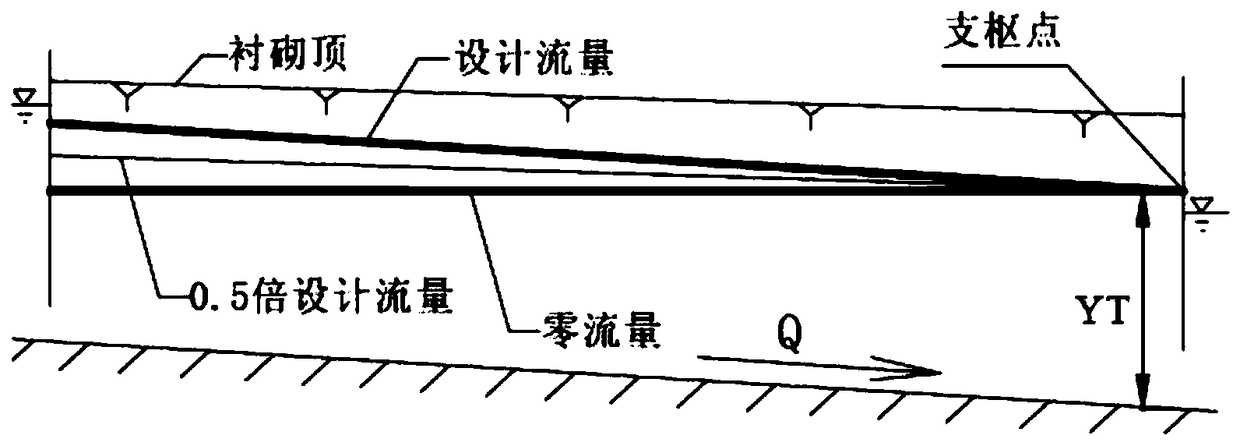Water diversion project operation mode converting method
A technology of operation mode and conversion method, which is applied in the field of operation mode conversion of water diversion projects, can solve the problems of uncoordinated storage volume regulation and emergency demand, poor water flow response and recovery characteristics, etc., and achieves obvious adjustment effect and strong operability Effect
- Summary
- Abstract
- Description
- Claims
- Application Information
AI Technical Summary
Problems solved by technology
Method used
Image
Examples
Embodiment 1
[0039] This embodiment is a method for converting the operation mode of a water diversion project, and the process is as follows figure 1 shown. The steps of the method described in this embodiment are as follows:
[0040] 1) The steps of establishing the hydraulic simulation model under the control of the gate pump group: it is used for the simulation of the constant flow and unsteady flow process of the water diversion project. The functions mainly include: the calculation of the water surface line and storage volume of the canal pond of the water diversion project, and the simulation analysis of the hydraulic response process of the canal under the control of the sluice pump group.
[0041] For water diversion projects ( figure 2 ) characteristics, build a one-dimensional hydraulic model, generalize complex internal structures such as control gates, water diversions, inverted siphons, and open channels, and couple the generalized internal structures with the Saint-Venant...
PUM
 Login to View More
Login to View More Abstract
Description
Claims
Application Information
 Login to View More
Login to View More - R&D
- Intellectual Property
- Life Sciences
- Materials
- Tech Scout
- Unparalleled Data Quality
- Higher Quality Content
- 60% Fewer Hallucinations
Browse by: Latest US Patents, China's latest patents, Technical Efficacy Thesaurus, Application Domain, Technology Topic, Popular Technical Reports.
© 2025 PatSnap. All rights reserved.Legal|Privacy policy|Modern Slavery Act Transparency Statement|Sitemap|About US| Contact US: help@patsnap.com



